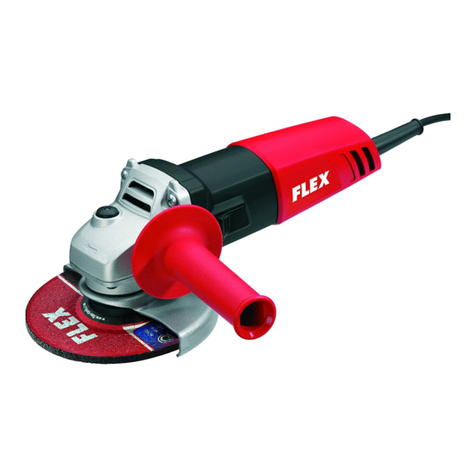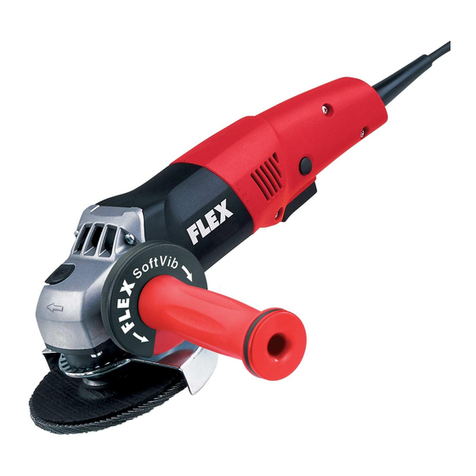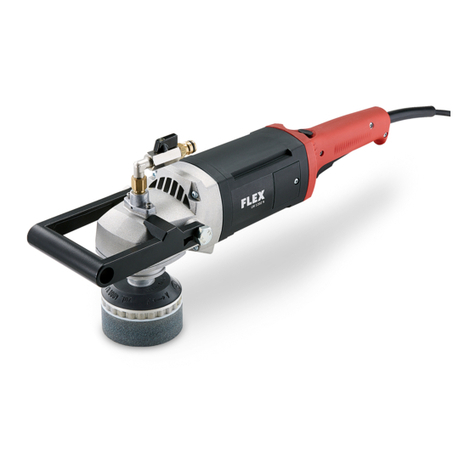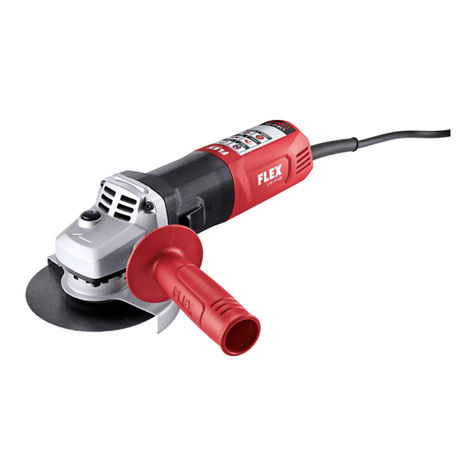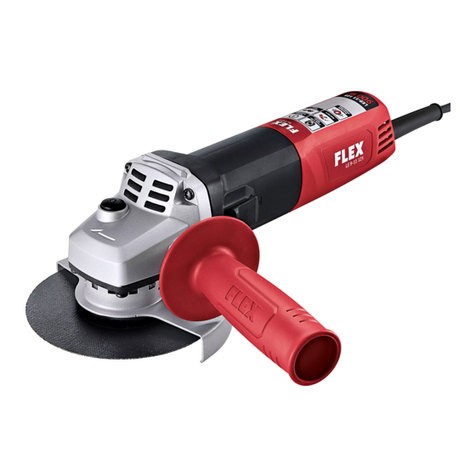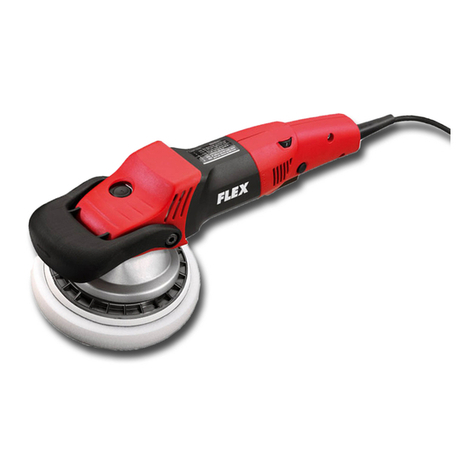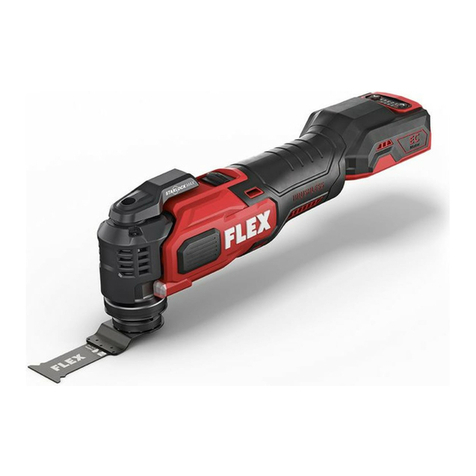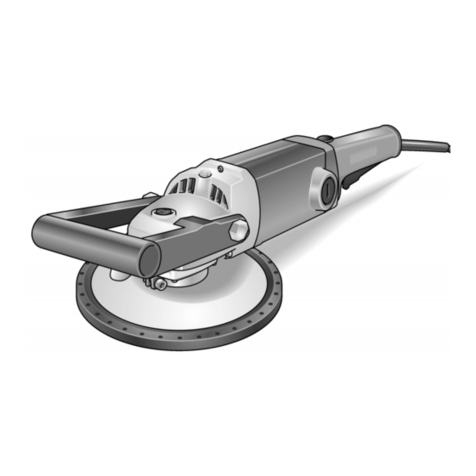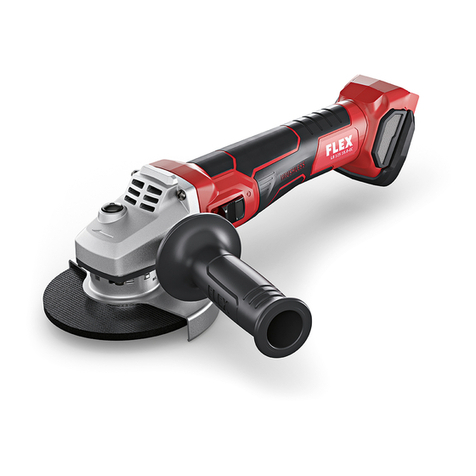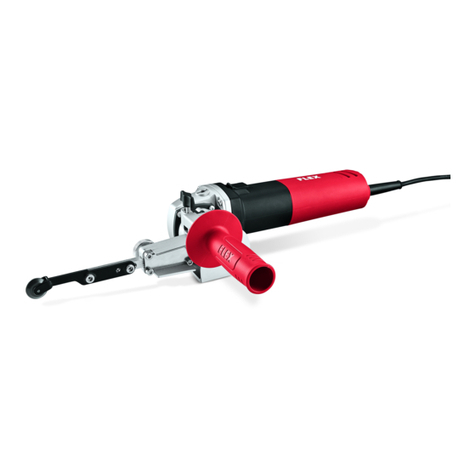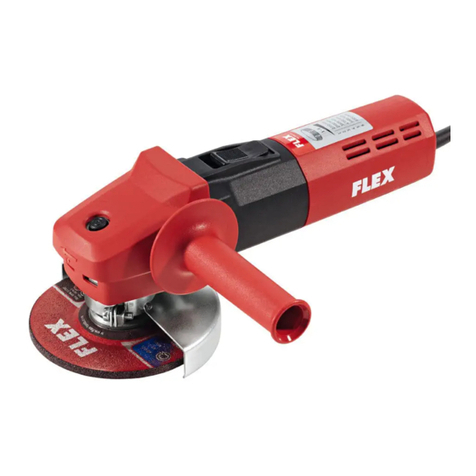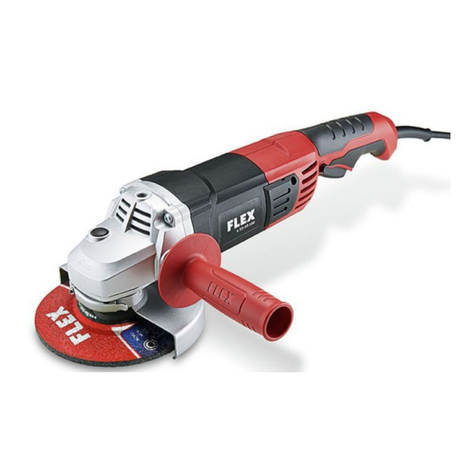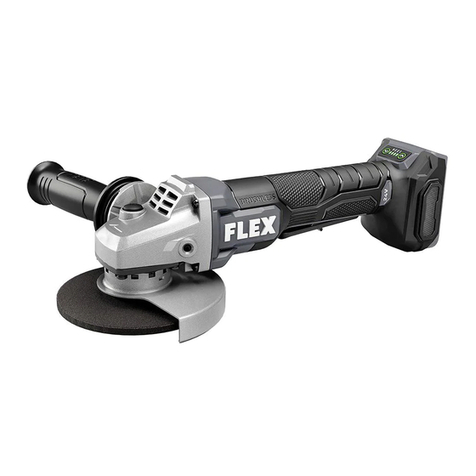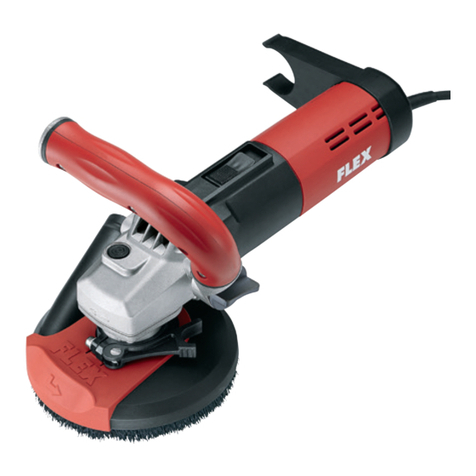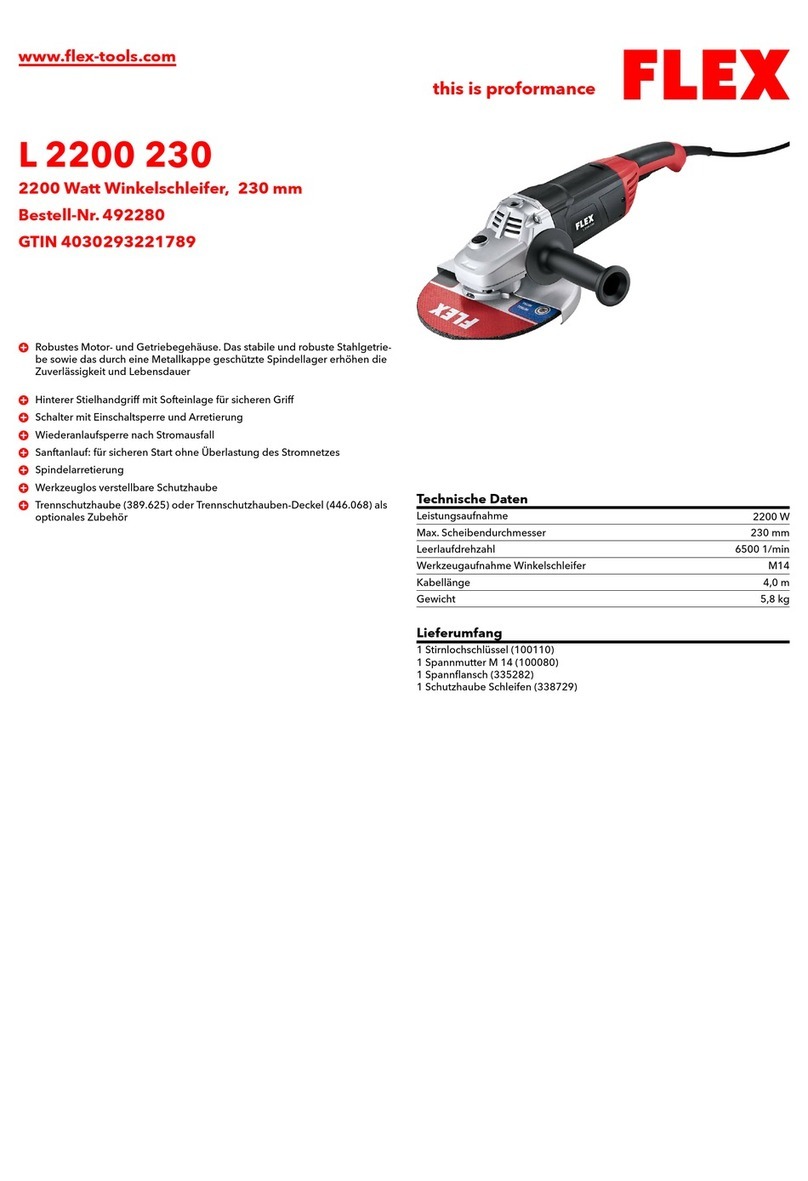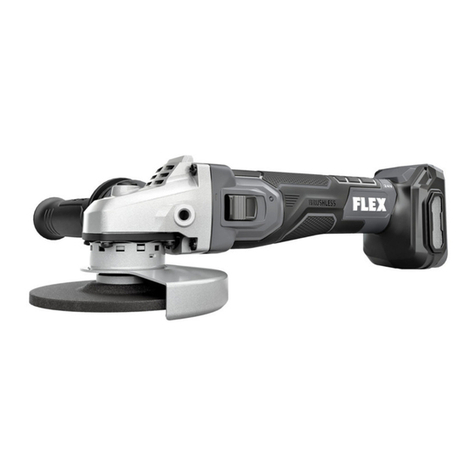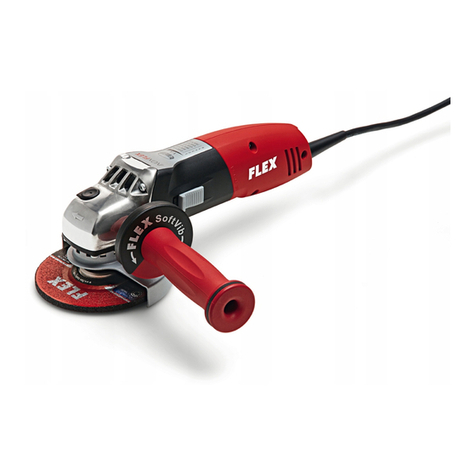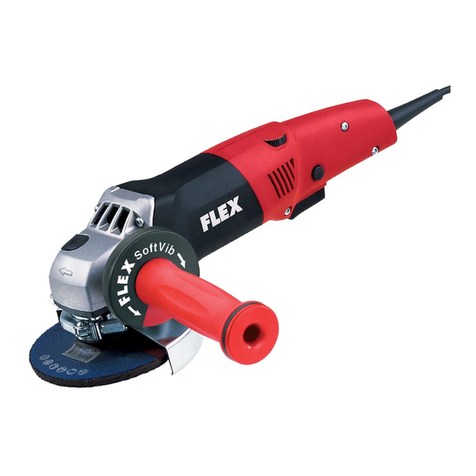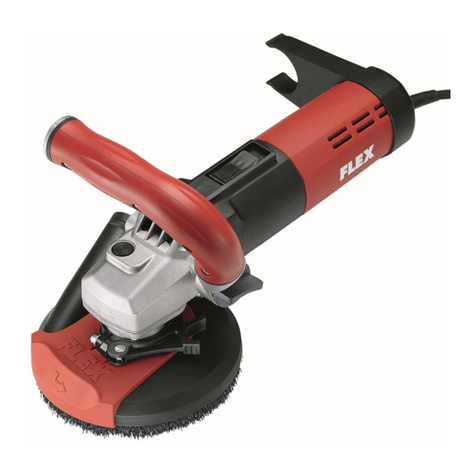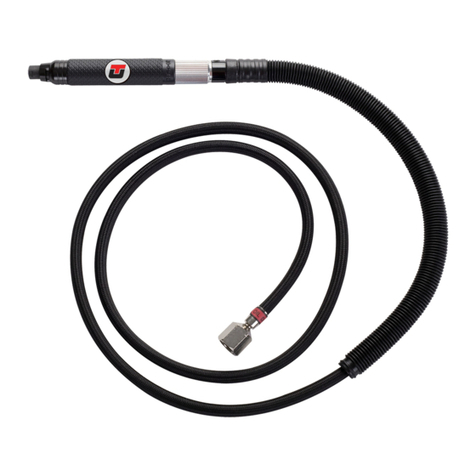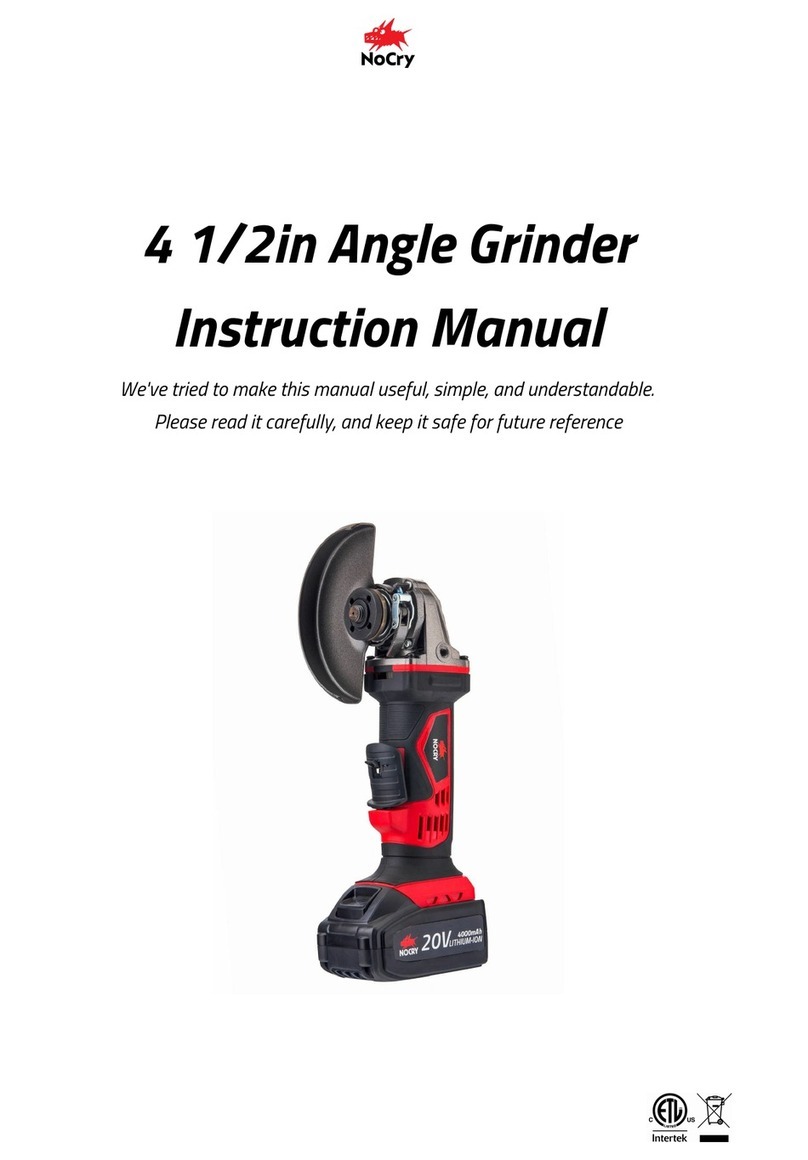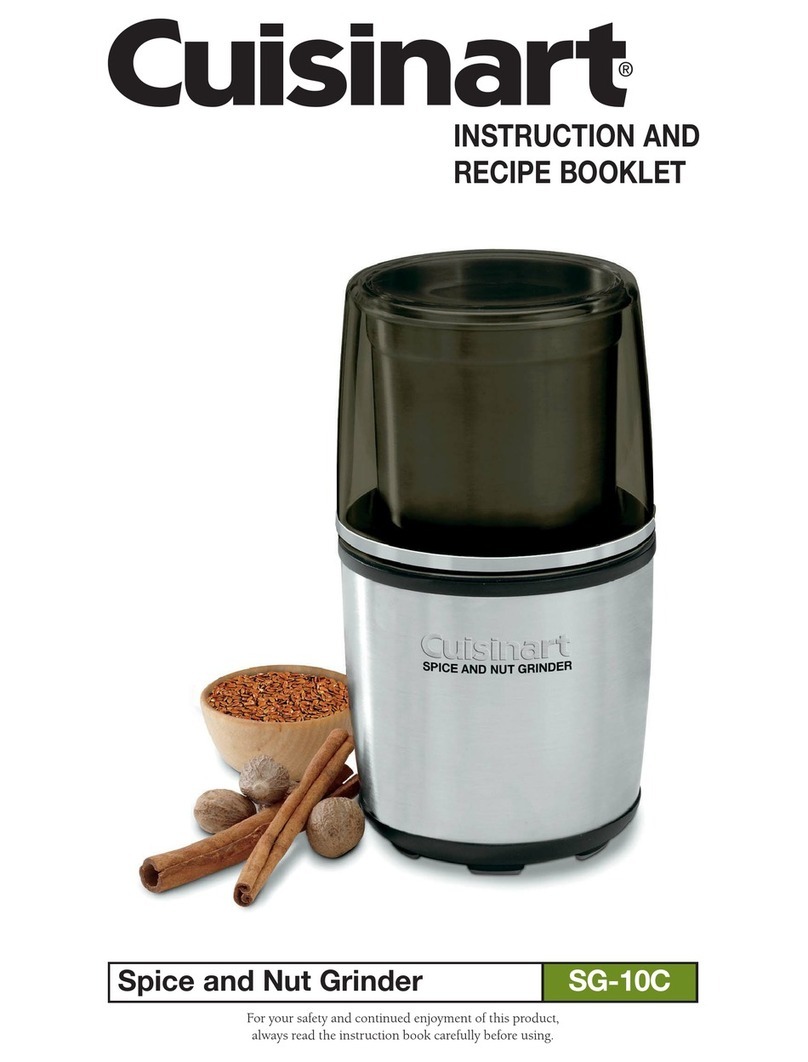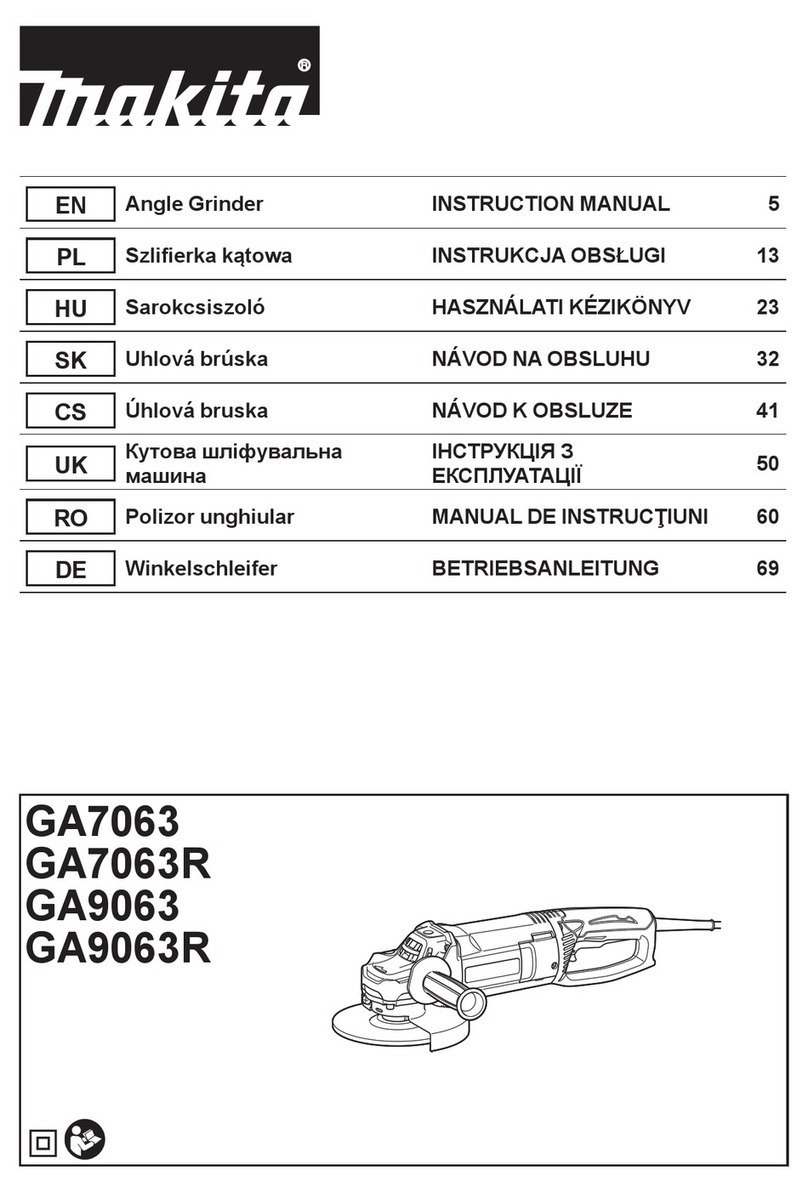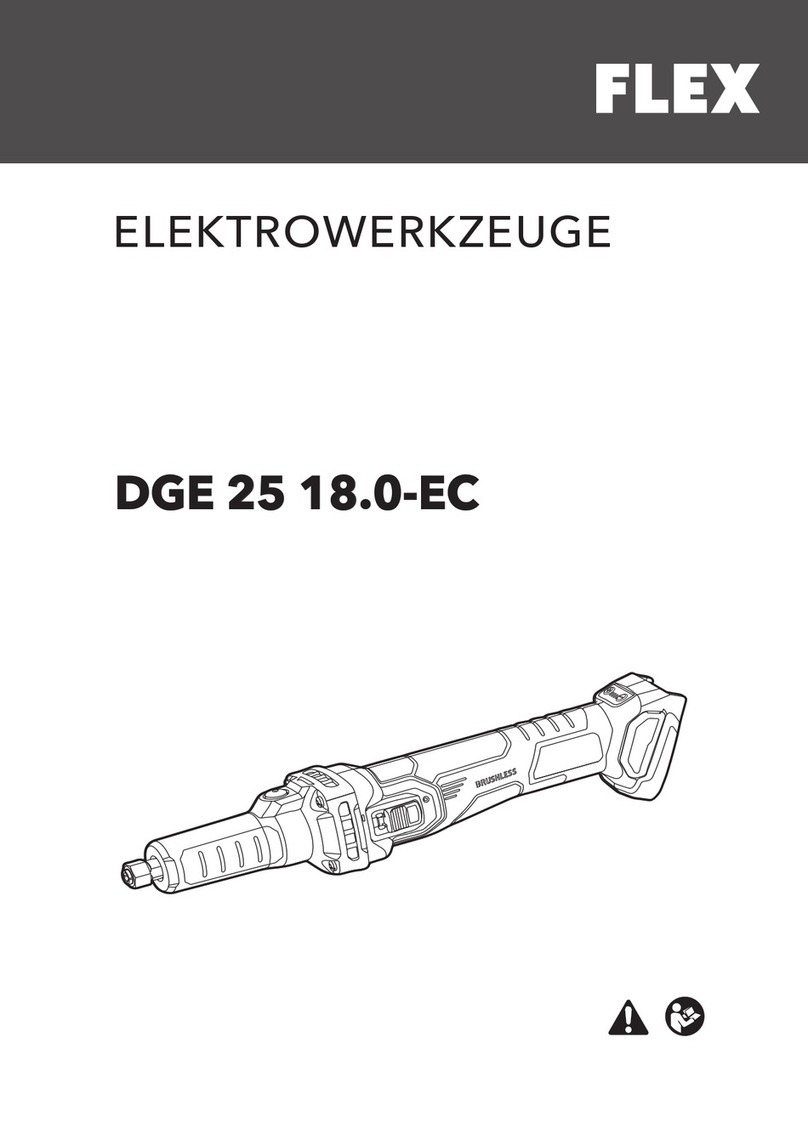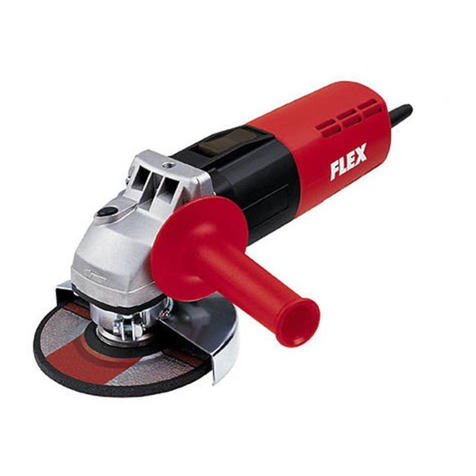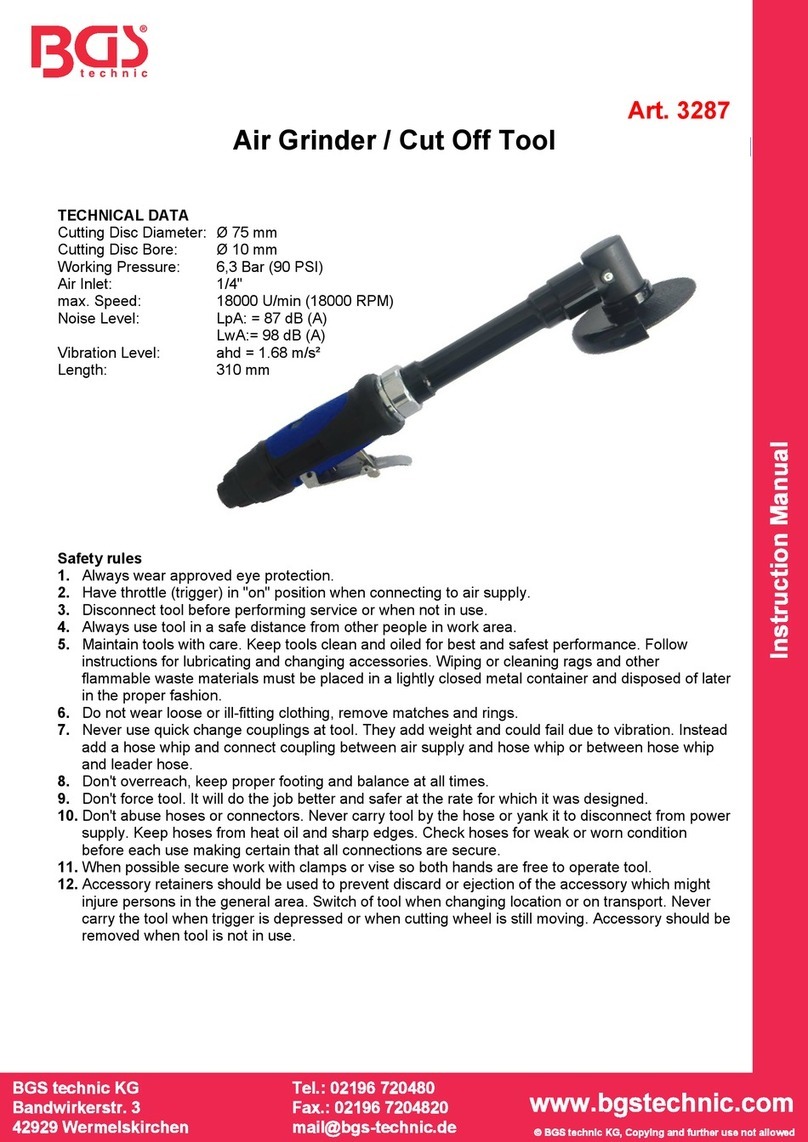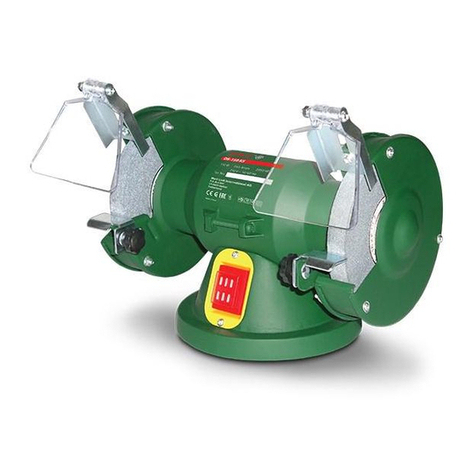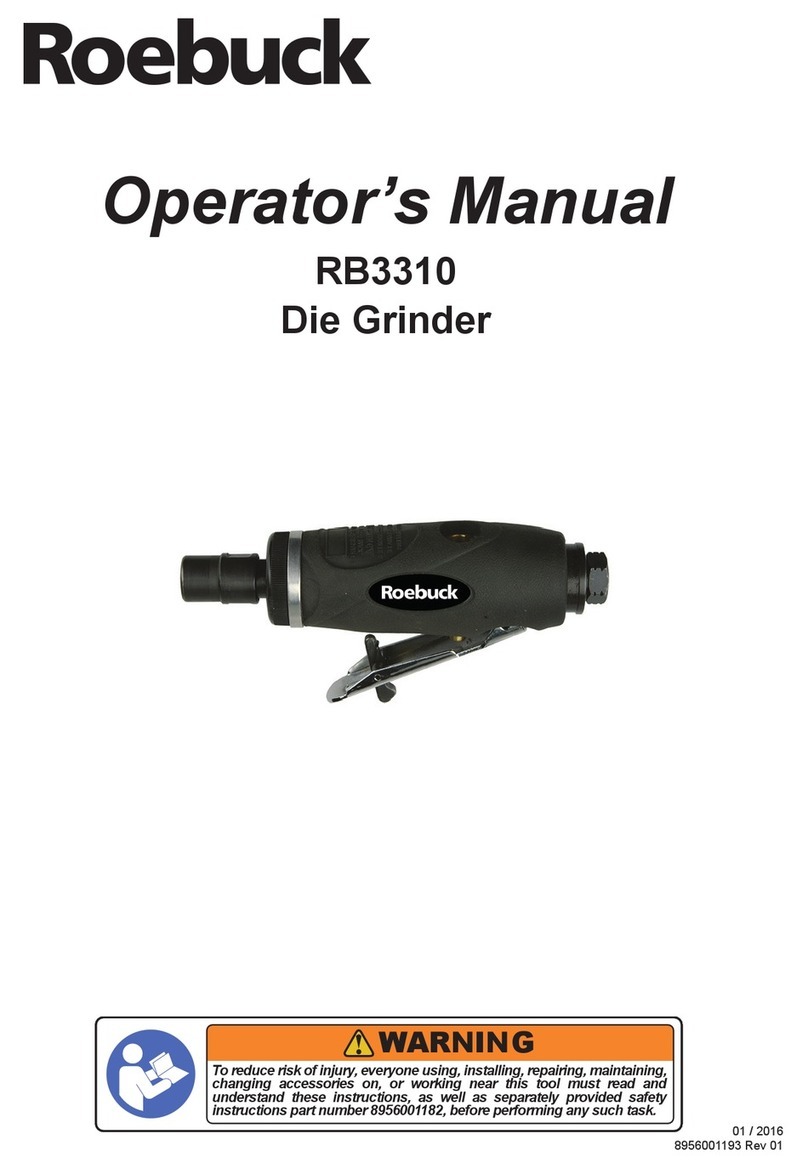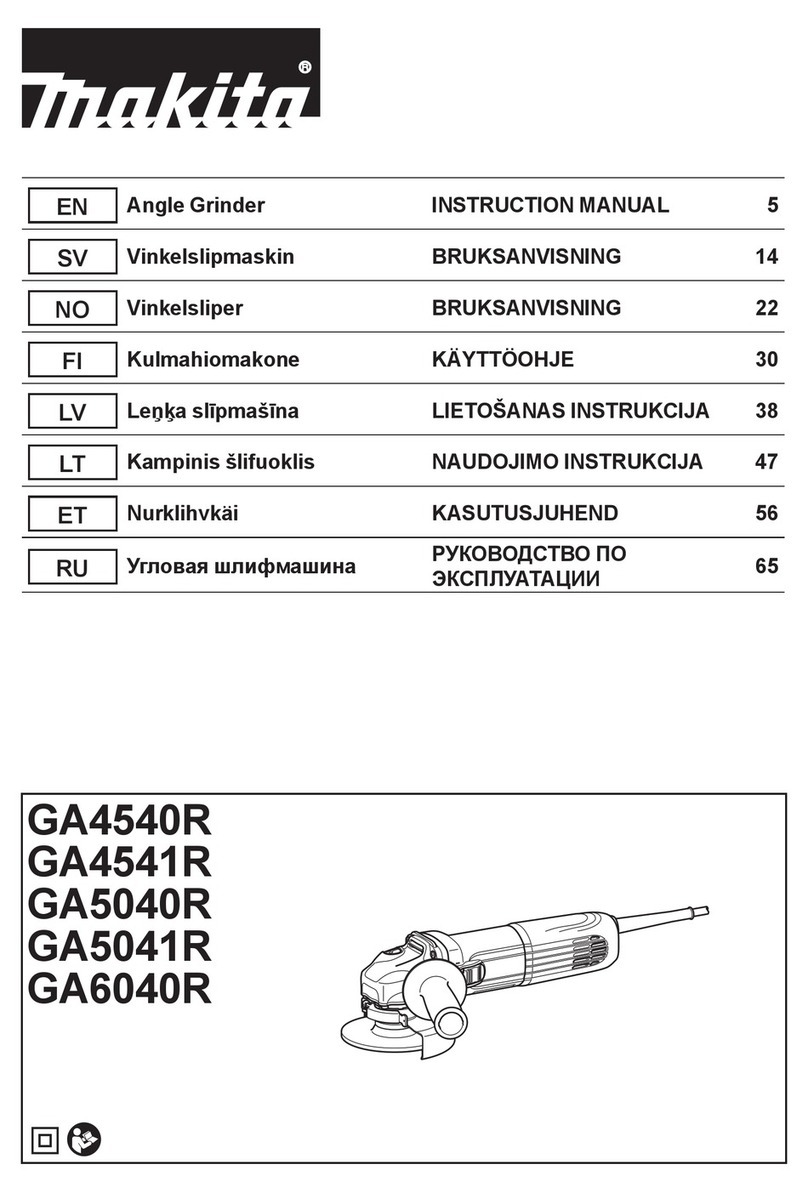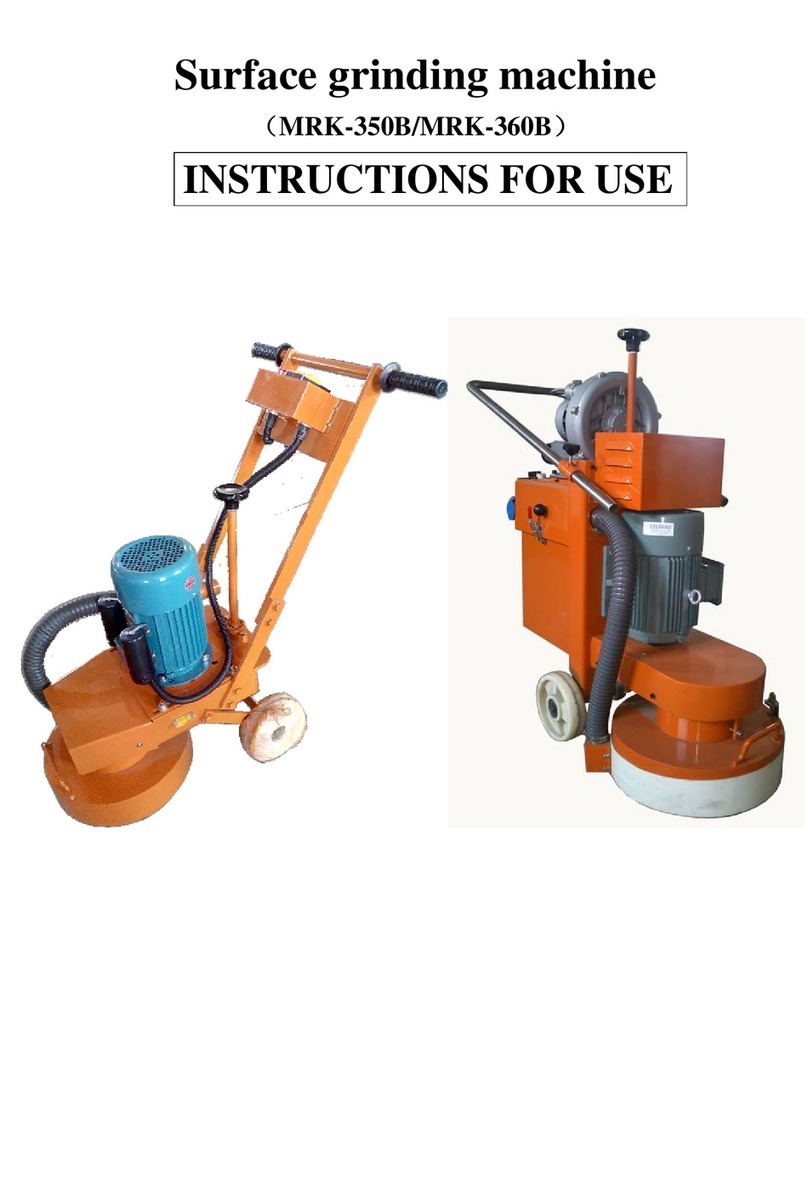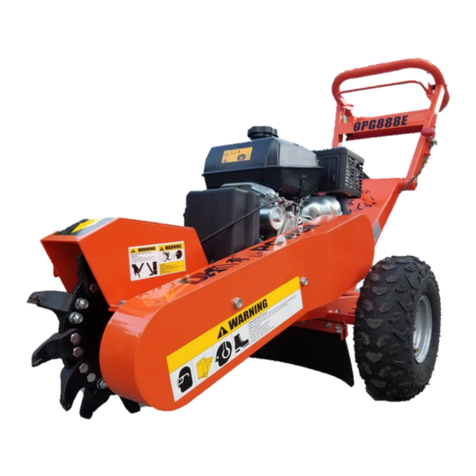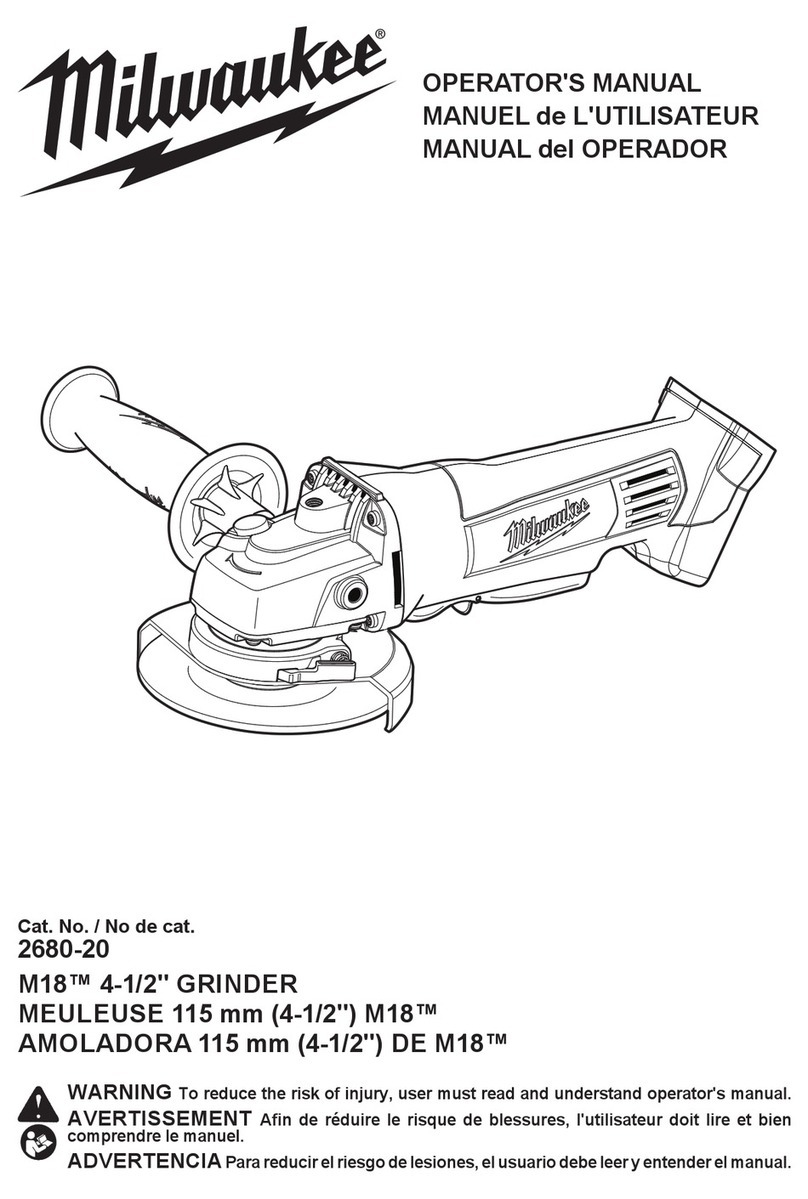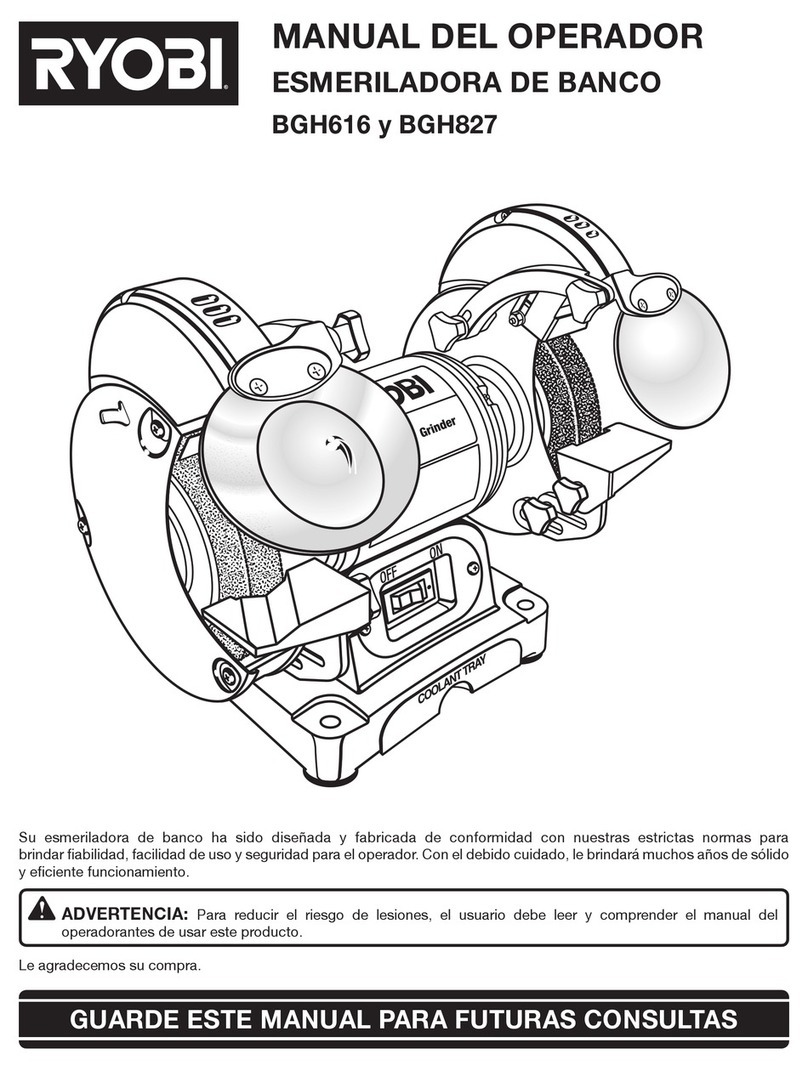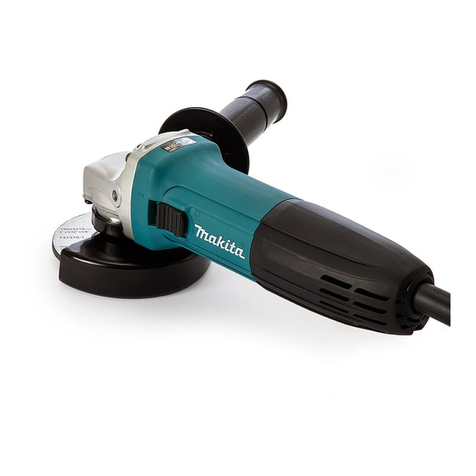
-5-
SAFETY WARNINGS FOR DIE GRINDER
Safety instructions for all operations
Safety warnings common for grinding,
sanding, wire brushing, polishing,
carving or abrasive cutting-off
operations:
• This power tool is intended to function
as a grinder, sander, wire brush, polisher,
carving or cut-off tool. Read all safety
warnings, instructions, illustrations and
specications provided with this power
tool. Failure to follow all instructions listed
below may result in electric shock, re and/or
serious injury.
• Do not use accessories which are not
specically designed and recommended
by the tool manufacturer. Just because the
accessory can be attached to your power tool,
it does not assure safe operation.
• The rated speed of the accessories must
be at least equal to the maximum speed
marked on the power tool. Accessories
running faster than their rated speed can
break and y apart.
• The outside diameter and the thickness of
your accessory must be within the capacity
rating of your power tool. Incorrectly sized
accessories cannot be adequately controlled.
• The arbor size of wheels, sanding drums
or any other accessory must properly t
the spindle or collet of the power tool.
Accessories that do not match the mounting
hardware of the power tool will run out of
balance, vibrate excessively and may cause
loss of control.
• Mandrel mounted wheels, sanding drums,
cutters or other accessories must be
fully inserted into the collet or chuck.
If the mandrel is insufciently held and/or
the overhang of the wheel is too long, the
mounted wheel may become loose and be
ejected at high velocity.
• Do not use a damaged accessory. Before
each use inspect the accessory such as
abrasive wheels for chips and cracks,
sanding drum for cracks, tear or excess
wear, wire brush for loose or cracked
wires. If power tool or accessory is
dropped, inspect for damage or install an
undamaged accessory. After inspecting
and installing an accessory, position
yourself and bystanders away from the
plane of the rotating accessory and run
the power tool at maximum no-load speed
for one minute. Damaged accessories will
normally break apart during this test time.
• Wear personal protective equipment.
Depending on application, use face
shield, safety goggles or safety glasses.
As appropriate, wear dust mask, hearing
protectors, gloves and workshop apron
capable of stopping small abrasive or
workpiece fragments. The eye protection
must be capable of stopping ying debris
generated by various operations. The dust
mask or respirator must be capable of ltrating
particles generated by your operation.
Prolonged exposure to high intensity noise
may cause hearing loss.
• Keep bystanders a safe distance away
from work area. Anyone entering the
work area must wear personal protective
equipment. Fragments of workpiece or of a
broken accessory may y away and cause
injury beyond immediate area of operation.
• Hold power tool by insulated gripping
surfaces only, when performing an
operation where the cutting accessory may
contact hidden wiring. Cutting accessory
contacting a “live” wire may make exposed
metal parts of the power tool “live” and could
give the operator an electric shock.
• Always hold the tool rmly in your hand(s)
during the start-up. The reaction torque of
the motor, as it accelerates to full speed, can
cause the tool to twist.
• Use clamps to support workpiece
whenever practical. Never hold a small
workpiece in one hand and the tool in the
other hand while in use. Clamping a small
workpiece allows you to use your hand(s) to
control the tool. Round material such as dowel
rods, pipes or tubing have a tendency to roll
while being cut, and may cause the bit to bind
or jump toward you.
• Never lay the power tool down until the
accessory has come to a complete stop.
The spinning accessory may grab the surface
and pull the power tool out of your control.




















